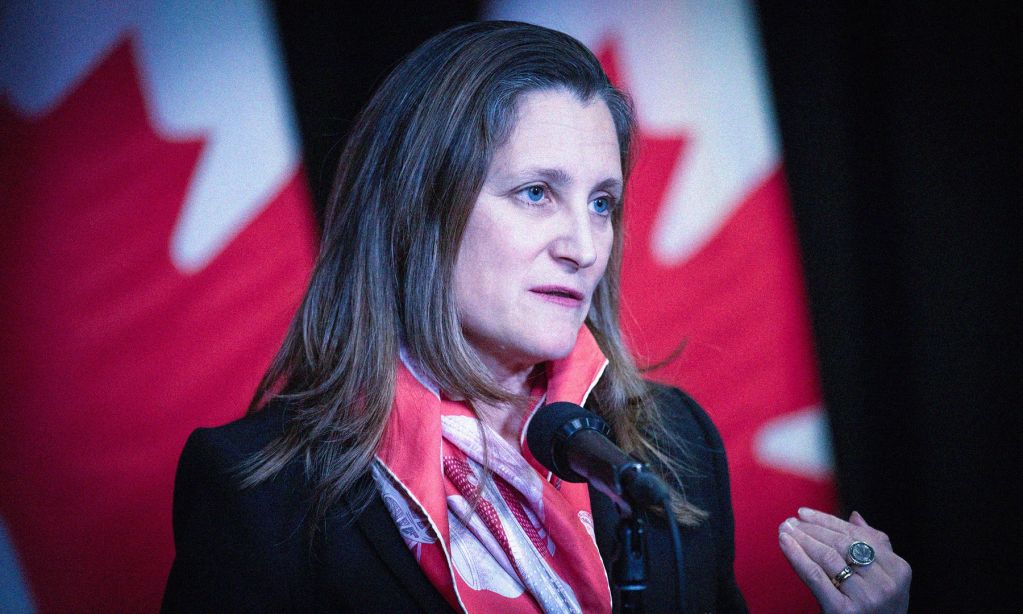Despite plummeting public opinion polls, the federal Liberals made only a half-hearted attempt to turn the page in a fall fiscal update marked by economic restraint.
The feds are putting housing measures on display, but actual new public spending on that front is marginal. Elsewhere, the government found $3 billion in “refocused” government spending that may signal public service cuts to come. Altogether, the fiscal update is an uninspiring response to the myriad crises confronting the country.
Housing
On housing, the update is more spin than substance. Most of the fiscal effort remains the removal of the GST on new purpose-built rental housing, announced in September. Ostensibly there is $15 billion for low-cost loans for new rental housing construction but this adds to already-approved financing—meaning the “new money” won’t even be used until 2025/26.
Unfortunately, subsidizing the private sector through low-interest loans will not help bring about the levels of affordability that low and middle income households need. A study commissioned by the National Housing Council found that only 19 per cent of units funded through private-sector loans are affordable to moderate-income households. Only three per cent are within the reach of low-income households.
In the one major area where CCPA and a wide range of housing advocates have called for action—supporting new non-market housing—the FES commits only $1 billion over three years, again not starting until 2025/26.
This is a shame because non-market housing has a proven track record of remaining affordable, and bringing down costs in the broader housing market. This is an area where we need the federal government to step up but to date they have been reluctant to do so.
On the plus side, the update makes a plan to tackle Airbnb-style short term rentals by denying income tax deductions where operators are not in compliance with municipal and provincial rules.This will help reinforce measures the BC government has taken in BC to crack down on short term rentals—that are removing units from the long-term rental market and driving up rents. Some jurisdictions in Europe—in Germany, Vienna, and Italy (Florence), for example—have moved more swiftly to crack down on short-term rentals.
There’s a reason why housing is taking centre stage—today’s Statistics Canada data shows that mortgage interest costs have gone up by a whopping 30 per cent and rents have gone up, too. The fiscal update promises a new “Canadian Mortgage Charter” to help homeowners, though it amounts mainly to guidance for financial institutions and does not include any tangible financial support for households.
The fall economic statement's housing commitments are still an order of magnitude too few given the dearth of affordable supply and projected population growth. Instead, we essentially got a continuation of the same approach they’ve taken since 2017—an approach that has failed to yield measurable reductions in skyrocketing housing costs.
Affordability
According to Statistics Canada, grocery inflation is now at 5.4 per cent, down slightly from 5.8 per cent in September. With recent news that one in 10 Torontonians are using food banks, it’s a stark indicator that affordability is reaching a crisis point for too many households.
The fall fiscal update includes promises to increase competition in the grocery sector and to work with the big chains to stabilize prices, but neither approach will return food prices to the level they were at before Canada experienced runaway inflation. There is no mention of taxing excess grocery profits, introducing price controls or directly tackling the problem in any way.
The update also introduces or expands some minor, targeted affordability programs—such as a very modest expansion of employment insurance for seasonal workers and a plan to tackle unfair banking, telecom and airline fees—but nothing that would benefit most household budgets in a meaningful way.
Public services
Budget 2023 promised to find $15 billion in “refocused” spending. The fall fiscal update bumps that number up by almost $3 billion over five years.
There are no job cuts on the table today, but budget cuts almost always amount to staffing cuts in the end. The update also explicitly commits to slowing the growth of the public service. The government appears to be laying the groundwork for a smaller public service at precisely the moment when the feds need to increase public sector capacity to deliver vital new programs and services, such as a long-awaited pharmacare program.
What’s missing?
Freeland described the fall fiscal update as “narrowly focused” on housing and affordability. Indeed, many crucial areas were left out entirely, including:
- Pharmacare: The Liberal-NDP agreement includes an outstanding commitment to a national pharmacare program, but the fiscal update was completely silent on it. NDP Leader Jagmeet Singh is on the record saying negotiations are continuing.
- Disability benefits: The long-awaited Canada Disability Benefit was also absent, though regulations are underway.
- Child care: No new money was included to expand the number of $10-a-day child care spaces in Canada, nor new money to deal with child care staffing needs. This is another example of the feds deciding they’ve done enough heavy lifting on this file, and now it’s the provinces’ turn.
- Public transit: Municipalities across the country have been scrambling to keep the lights on at their public transit agencies, and provincial governments have been asleep at the wheel. The federal government has nothing new to offer here.
- Climate action: A record-breaking forest fire season wasn’t enough to spur new spending on climate mitigation or adaptation in this update. While the update does pony up the cost of previously announced subsidies for battery manufacturing facilities—at least $8 billion over the next five years—there is nothing new or notable on climate.
Dark clouds on the horizon
The fall fiscal update includes a long list of programs and policies that will make headlines in the days to come, but look beneath the surface and you’ll find that many of these announcements lack substance.
In many cases, the update is simply reallocating or reannouncing existing funding. In other cases, the government is offering financing—but not funding or direct investment—that it expects to recoup over time. And in the cases where there is new direct public spending, the amounts are generally marginal.
Ultimately, while today’s fiscal update is not an austerity budget, it marks a clear turn in that direction. After backstopping Canadians during the early days of the pandemic with income relief, corporate support and transfers to the provinces to meet the urgent health care and long-term care challenges—programs that came with price tags in the tens or even hundreds of billions of dollars—the government is signaling a new era of restrained spending ahead.
Voters appear to be ready for change, but the government has not offered a change agenda in this fiscal update. If anything, they are backing away from the ambitious changes required in times of crisis.









